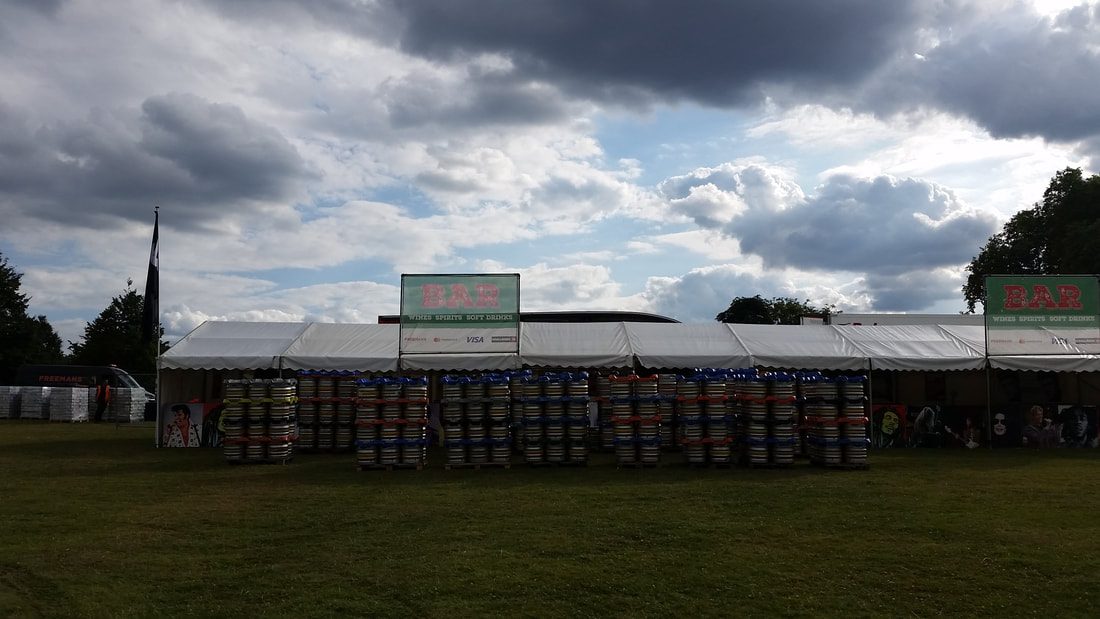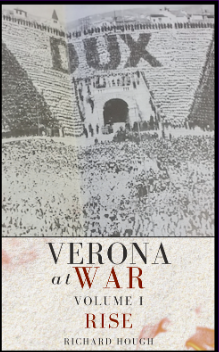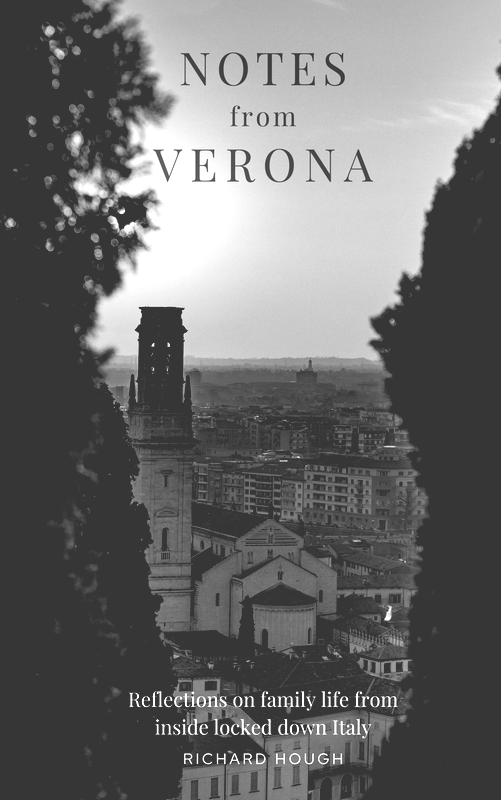|
Ever since we relocated to Verona six years ago, our annual summer 'holiday' in the UK has become a keenly anticipated highlight of the year. As much as we enjoy la dolce vita, there's nothing quite like spending a few weeks at home, gorging on sausage rolls, wallowing in the fantastically mild weather and sinking more pints of over-priced craft ale than I care to remember.
This summer we somehow managed to squeeze in a week in London, a luxury camping trip to Norfolk, an enforced stopover in Leeds, a few nights in Glasgow, a couple of days on the Mull of Kintyre, a day trip to Jura and, finally, a self-indulgent couple of nights in Leith (without the kids), before eventually returning to Verona via Venice. Aside from the obvious pleasure of spending quality time with family and friends, this trip was also a watershed moment in my youngest son's linguistic journey. Going from virtually no-spoken English (his comprehension is pretty good), he now has an eclectic English vocabulary that includes (in no particular order) "ginger biscuits", "golly gosh" (seriously), "aeroplane" (closely followed by "another aeroplane"), "let's go!", "it's raining again" and "help!". His confidence and pleasure in spoken English is continuing long after our summer tans have faded (okay, so we didn't actually get a tan in Norfolk, but you get the point).
Over the years, our annual trip to the UK has increasingly coalesced around the Lambeth County Show in Brockwell Park, south London. Held every year on the third weekend in July, it is here that, tradition dictates, we kick-start our annual summer holiday.
The Show is an intoxicating blend of fairground rides, sheep shearing, jousting, sport, cider, bouncy castles, a petting farm, horticultural competitions, live music (featuring a mix of dub, afro-beat, disco, reggae, ska and soul), jerk chicken, sunshine and showers. Hugely popular, it has just about retained it's unique character, which somehow reflects both the traditional country show and the diverse inner-city communities of Brixton and Herne Hill. From concession sales and sponsorship, plus cash donations made on the day, the fair generates over £300,000 for the local council. Such events don't come cheap though (it costs over £600,000) and so the local council tax payer picks up the bill. Whether such expenditure represents good value for money, you would have to ask the council tax-paying residents of Lambeth.
What certainly represents good value for money was the visionary investment that created the park itself.
Brockwell Park was once part of the ‘Great North Wood’, a dense forest that stretched from the Weald of Sussex and Kent to present day Brixton. In the 12th Century the land formed part of the Manor of Lambeth, which belonged to the Archbishop of Canterbury. The land was then used as a monastic retreat until it was seized under Henry Vlll's Dissolution of the Monasteries. Until the 1650s the site belonged to the Tulse Family. By 1807 the eastern side of the original estate was owned by glass merchant John Blades. The surrounding fields were laid out as a private park for the new Brockwell Hall on top of the hill, and houses in nearby Brixton Water Lane were built for estate staff. During this period this part of Lambeth was dominated by woods and commons, with few villages or settlements. Joshua Blackburn, grandson of John Blades, inherited the estate in 1860. Taking advantage of the Herne Hill railway station (built in 1862), he added new buildings including Clarence Lodge and a line of houses along the south side of Dulwich Road.
But, in the 1880s the huge estate was put up for sale for housing.
In March 1891, following a campaign led by local MP Thomas Lynn Bristowe, London County Council acquired the land. Bristowe even used his own money to guarantee the purchase. On 2 June the following year, the park was opened to the public. At the park's opening ceremony, Bristowe suffered a catastrophic heart attack and died on the steps of the Brockwell Hall. In 1883 a huge memorial statue was erected near the main Herne Hill gate, paid for by public subscription. In 1958, in an flagrant act of cultural vandalism, the statue was demolished to make way for a road widening project. The bust itself was salvaged and given to the Bristowe family. In 2007 the Brockwell Park Management Advisory Committee secured £6 million of lottery funding, to restore and improve its parklands, buildings, play facilities and wetland areas. In 2012, following some extraordinary detective work by local amateur historians, the bust was unearthed in the Bristowe family garden. It was subsequently restored and unveiled in Brockwell Hall, where it was unveiled on the 120th anniversary of Bristowe's death.
London, of course, is blessed with many wonderful green spaces. Hyde Park, Regent's Park, St James' Park, Richmond Park, Clapham Common, Hampstead Heath, Kensington Gardens, Crystal Palace....
One of the joys of exploring the city with young kids is discovering these green oasis in the midst of the concrete metropolis. Places like Queens Park in north west London, Dulwich Park in South London and Coram's Fields, near the British Museum in central London, are just some of the green spaces we discovered this summer. Coming from Italy, where public green spaces are often under-utilised, inadequately resourced, shabby, no-go areas, Brockwell Park positively bursts with life and activity. Leisure pursuits of every kind, from tennis, to football, boxing, to kite-flying. Imaginative and abundant children's play areas, including an adventure playground, a paddling pool and wet play area, meadows, parkland, woodland and walled gardens, football pitches, tennis courts and a bmx track, a thriving cafè, a vast green space with stunning views over the city of London, all fenced in and well-maintained. Such parks are not just the lungs of the city, they are the beating heart of the local community. It is the public spirited Victorians who we should thank for the abundance of public parks, not just in London, but throughout the UK. From the Derby Arboretum, to Glasgow's Kelvingrove, these public spaces were set aside by well-meaning public figures, like Thomas Lynn Bristowe, who, in the wake of the industrial revolution, understood the need to provide open green spaces for rest and relaxation. It falls to us to ensure that they are cherished, preserved and, above all, enjoyed. |
AboutRichard Hough writes about history, football, wine, whisky, culture + travel and is currently working on a trilogy about wartime Verona.
|









